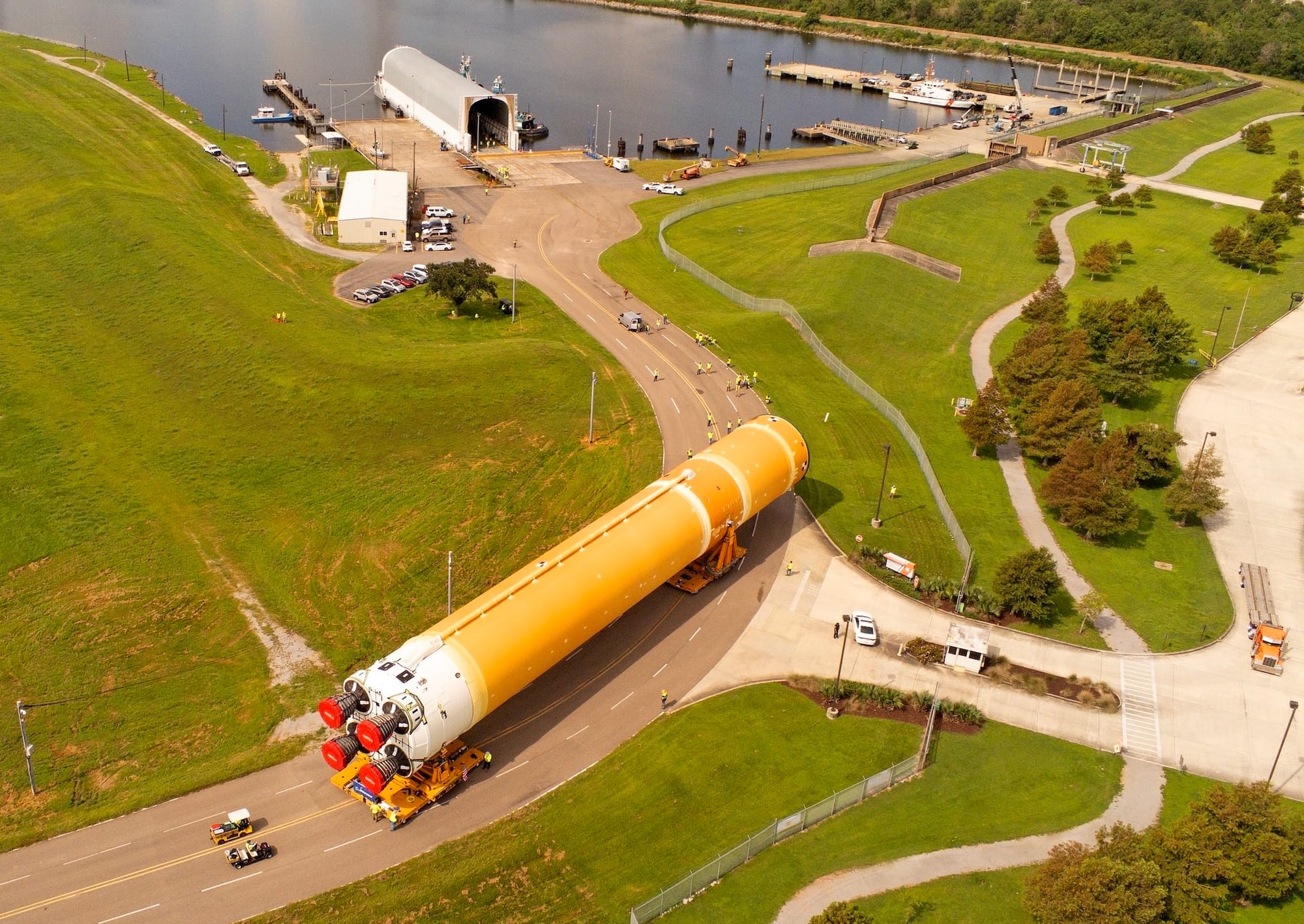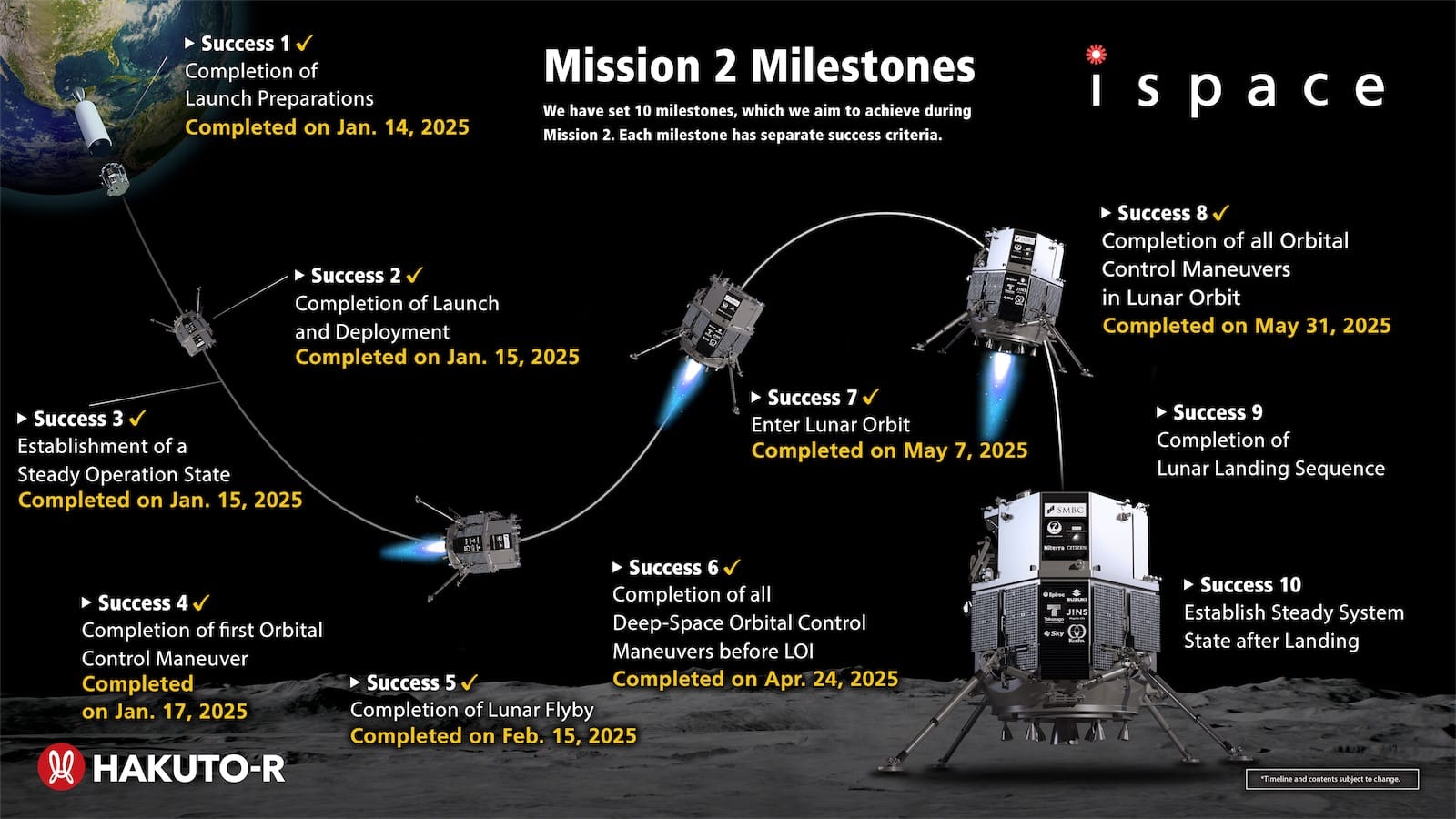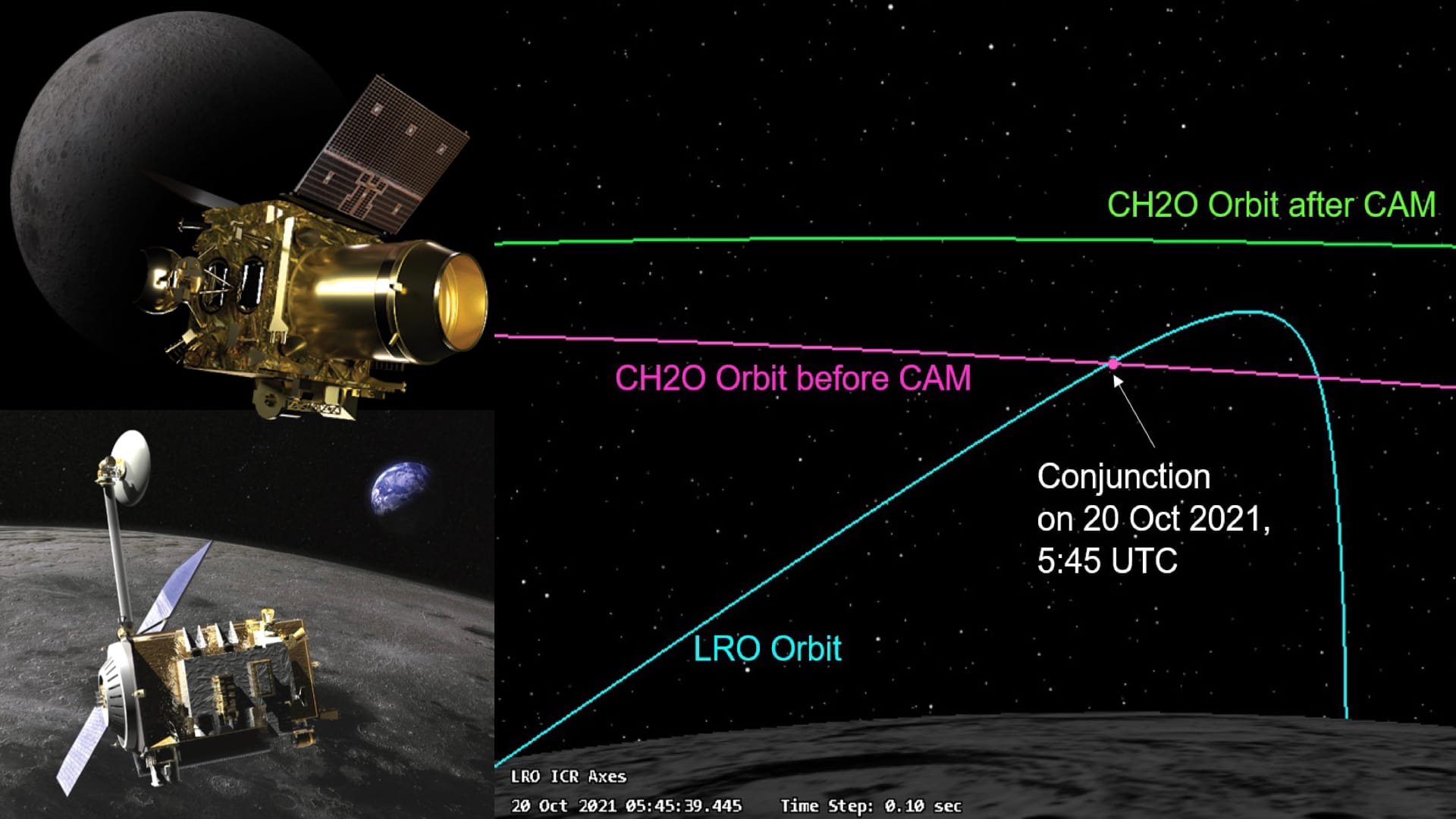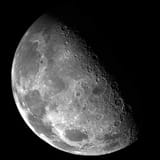Moon Monday #227: Proposed cuts, cancellations, continuations, and changes to NASA’s lunar missions
And other mission updates.

The US Trump administration has released details of the FY2026 presidential budget request for NASA, which proposes a historic ~25% cut overall but continues support for the crewed Artemis II and Artemis III missions and most of its associated science elements—though purely because the US wants to land on the Moon before China attempts the same by 2030. I’ve compiled and contextualized a detailed rundown of the specific proposed cuts, cancellations, continuations, and changes to NASA’s Moon missions through this budget request from across its documents while also highlighting notable additional details from them. Support my writing if you appreciate my efforts and find it useful.
Proposed cuts and cancellations
- Cancel the “grossly expensive” SLS rocket and Orion spacecraft from Artemis IV onward in favor of commercial alternatives—whose exact form is as-yet unknown. The “Budget Request Summary” document notes that the “>$3 billion a year in savings from the transition to commercial systems will be reinvested in Moon to Mars activities.” To enable said commercial transportation systems, formally called the Commercial Moon to Mars (M2M) Infrastructure and Transportation Program, NASA wants to ingest $864 million this year and next—and then quickly ramp up their funding by end of decade. These funds would essentially come from redirecting existing NASA budgets for crew and experiments at the International Space Station.
- NASA aims to cancel the agency-led international Gateway lunar orbital habitat. The budget request’s “Mission Facts Sheets” state that NASA will “close out the current contracts while alternative uses of the Gateway hardware are evaluated by commercial and international partners.” Considering that many hardware elements are already built or are in production, this would essentially leave NASA’s partners to figure out by themselves what to do with the parts. The “Budget Request Summary” notes that NASA is requesting $304 million from the US Congress to conduct an orderly closeout of the Gateway program in 2026, without specifying what that entails.
- As per the “Mission Facts Sheet”, NASA is not requesting funds for its LIFT-1 mission to extract oxygen from lunar soil. It was intended to demonstrate a technology critical for enabling long-term lunar exploration and living. Prior to this budget request drop, NASA had said it would fund $200-250 million in total for this mission. NASA now says it will “prioritize ground-based high-fidelity systems testing” instead.. 🤷🏻♂️
- Continuing the decision from the prior Biden administration, NASA is upholding the cancellation of its already-built VIPER rover by requesting no budget for the mission. VIPER was originally meant to reveal the first set of hard facts about water ice deposits on the Moon’s south pole, which has been missing from the US Artemis program.

- The budget request proposes reducing funding for the DALI program from $15 million to $10 million. DALI’s job has been to mature the flight-readiness levels of advanced lunar instruments for future missions.
- Likewise, support for future, community-identified, high impact Decadal lunar science missions is proposed to be drastically reduced. Scoping of such missions usually takes place under NASA’s “Lunar Future” program or division. For 2026, NASA is proposing its funding to go from $10 million to $0. Although the “Budget Technical Supplement” document notes that it’s so because of “higher priorities in the Science portfolio.” And that “as funding becomes available in future years, NASA will perform studies to address these potential strategic missions as defined in the Decadal alongside other strategic goals for science near and on the Moon.”
- NASA wishes to stop operating the THEMIS-ARTEMIS set of five small spacecraft. Since 2011, two of these have been studying how the Sun’s wind of radiation and charged particles interact with the Moon, something crucial to understanding parts of the radiation environment on and around Luna to safely send and return future astronauts. Data from the ARTEMIS pair have been consistently producing published scientific results even in this decade but the approximate $1 million per craft is an operations cost NASA no longer wishes to bear. Between this and Gateway’s proposed cancellation also depriving the agency and its international partners of information on what long-term deep space radiation would do to astronauts, it would be ironic to see a greater push for human spaceflight while defunding some of the science that enables it.
Newly proposed changes

- NASA wants to move the CLPS program from its Science Mission Directorate to the Exploration mission directorate. The “Budget Request Summary” notes that NASA is continuing to request the planned $250 million for CLPS for 2026, and that the agency will continue operating the program the same way as before. However, when you consider that even when the Science directorate managed CLPS, we saw abrupt changes like landing site swaps on missions due to other directorates taking priority. As such, CLPS being managed under the Exploration directorate would likely reduce the program’s scientific value in favor of purely technological and human spaceflight driven goals.
- As planned during the previous Biden administration, NASA is indeed intent on introducing the PRISM-SALSA program with a $10 million annual budget to fly scientific and technological instruments whose goals are not strictly tied to any particular landing location on the Moon. The “Budget Technical Supplement” notes that NASA expects to have four such instruments on the Moon circa 2028 through CLPS landers—or even on other missions by NASA or its international partners as per available flight opportunities.
Proposed continuations
- Keep funding the crewed Human Landing Systems by SpaceX and Blue Origin at a total of $1.7 billion, and continue the combined $642 million towards developing the surface elements of the Artemis spacesuit, the versatile Artemis Lunar Terrain Vehicle, and collaborator JAXA’s advanced pressurized rover.

- NASA’s Lunar Discovery and Exploration Program (LDEP)—which has been formulating an integrated lunar science strategy and funding development of instruments for CLPS and Artemis missions—will continue to be funded at $137 million. It might seem like a drastic dip from the prior budgets thrice that amount but between VIPER’s cancellation and funds for CLPS now accounted for within its new home at the Exploration directorate, the proposed funding for the rest of the program elements is roughly on the same scale as before. And it’s projected to increase in the coming years too. Lunar science is not seeing the deep cuts of the rest of NASA’s science portfolio purely because the US wants to land on the Moon before China attempts the same by 2030, and that its robotic missions lag far behind the Chinese.
- NASA is requesting $56 million for its Space Technology Mission Directorate to develop foundational surface infrastructure capabilities for the Moon and Mars. Particularly, the “Budget Request Summary” notes that the directorate “will perform [sic] advanced non-nuclear power in support of lunar and Mars missions.”
- The budget request continues funding the operations of NASA’s Lunar Reconnaissance Orbiter (LRO) to support scientific investigations and landing site characterizations for Artemis and CLPS landing missions. But the 2009-launched LRO has gracefully aged now, is due for its final mission extension evaluation with limited capabilities left, and can no longer maintain an orbit that can study the Moon’s poles heads down in any case. Recognizing these constraints, a specialized team of US scientists released a report in 2022 urging NASA to plan an LRO replacement. Three years since, NASA has not approved any LRO successor despite the LExSO mission being proposed by members from the LRO team itself. The FY2026 budget request too does not ask for any funding for the same.
- NASA is thankfully continuing its funding to send and operate instruments on two missions by international partners. NASA will provide a neutron spectrometer for the upcoming joint ISRO-JAXA Chandrayaan 5/ LUPEX mission to study water ice on the Moon’s south pole. The agency will also support ongoing operations of its ultra-sensitive ShadowCam imager onboard South Korea’s 2022-launched KPLO lunar orbiter. ShadowCam is trying to locate water ice deposits in the Moon’s polar permanently shadowed regions.
Repercussions
Over and above the proposed cuts and changes, NASA not allocating or requesting any funds for missions to directly find and study lunar water ice deposits, despite the US failing at this central goal of Artemis, will make dealing with the already bad situation for Artemis worse. Next up, the US Congress will review all the budget proposals in the coming months for appropriations or changes. Although Marcia Smith explains how this process will not get done before October at best, until which a continuing resolution is in place for funds made available last year.
In the meanwhile, shortly after Elon Musk formally left DOGE last week, the Trump administration withdrew the nomination of Musk-allied Jared Isaacman as NASA Administrator, citing his lack of “complete alignment with President Trump’s America First agenda” as well as unspecified prior associations. While the Trump administration will propose a replacement for the US Senate to consider confirming again, this move essentially gives the White House even more freedom to overhaul NASA in the time being.
That’s because even though Isaacman was actually publicly aligned with Trump, the current Acting Administrator Janet Petro has fully embraced the challenge in resisting virtually nothing ever since the new US administration came in and selected her for the role. Under Petro, and through Presidential executive orders and other means, NASA has closed the offices of the Chief Scientist and Technology, Policy, and Strategy, removed critical scientific documents from agency-backed community websites, and also deleted inclusive language from the leading webpage of its Artemis program, among other changes.
Many thanks to Catalyx Space and Arun Raghavan for sponsoring this week’s Moon Monday!
Today’s Moon Monday involved a lot of work to capture adequate context for each of NASA’s proposed changes to its Moon missions. If you find my article and its dozens of links to be useful, and you appreciate my efforts to publish Moon Mondays as a curated community resource for free and without ads, kindly support my independent writing. 🌙
More mission updates

ispace Japan’s second Moon lander RESILIENCE successfully circularized its lunar orbit on May 28 with a roughly 10-minute main engine burn. The lander launched in January on a SpaceX Falcon 9 rocket, and then followed a multi-month low energy trajectory to the Moon. It entered lunar orbit on May 7 with a roughly nine-minute main engine burn. ispace is targeting June 5, 19:24 UTC as the Moon landing date and time for RESILIENCE. ispace says the lander will begin its descent to the lunar surface from its current circular orbit only, which makes its ~100-kilometer altitude a much higher starting point than those of contemporary landers such as India’s Chandrayaan 3 and the US-based Firefly’s Blue Ghost—which began their descent from 30 and 20 kilometers above the lunar surface respectively.
Resources to follow RESILIENCE:
- Watch the livestream on June 5 an hour prior to the aforementioned landing time
- Check ispace’s News blog and subscribe to it in an RSS reader
- Browse and search my recent past coverage on Japanese Moon missions for context
- Subscribe for free to my globally read Moon Monday blog+newsletter to receive mission updates with context 🌝
- The ninth launch of SpaceX’s Starship Super Heavy rocket on May 29 failed as well—due to a fuel leak and loss of attitude control on the upper stage, and the anomalous engine re-lighting of the booster stage leading to its explosion. The test flight did avoid the engine problems which had caused the upper stage to fail during its ascent itself on the previous two flights but the mission couldn’t achieve any of its key objectives: from opening the payload bay door and ejecting simulated satellites to testing heat shield tile reentry experiments to safely bringing back a previously flown booster. As such, NASA’s long road to putting humans on the Moon with Artemis III, which has been inching through Starship, has slowed down further with this failed flight.
- NASA, ISRO, and KARI continue coordinating lunar traffic for their respective orbiters. ISRO released its internal Space Situational Assessment Report for the year 2024 this April, and whose public executive summary notes the following:
14 OMs [Orbital Maneuvers] were carried out for the Chandrayaan-2 Orbiter, the plans were adjusted on 8 occasions. On one occasion, a scheduled orbit maintenance manoeuvre was advanced to avoid a close conjunction with Lunar Reconnaissance Orbiter of NASA. [...] An orbit maintenance manoeuvre was originally scheduled on 26 Nov 2024 but advanced to 11 Nov to mitigate conjunctions with LRO which were predicted to occur on 15-16 Nov.

- I could glean one mission update from NASA’s FY2026 presidential request’s “Budget Technical Supplement” document discussed above. Blue Origin’s upcoming robotic lander called Blue Moon Mark I will carry at least one more NASA payload: a retroreflector for lunar satellite ranging and navigation studies.
More Moon
- On May 29, China launched its Tianwen-2 mission to fetch samples from a ~100-meter near-Earth asteroid named Kamoʻoalewa. Earth-based spectroscopic observations and orbital simulations suggest that Kamoʻoalewa is likely to be a piece of the Moon, ejected during a crater formation. Chinese researchers have identified that comparing samples of this asteroid to the plethora of lunar samples will lend unique insights into our Moon’s origin and evolution.
- In order to enable planning for ESA’s future exploration of the Moon’s surface using Argonaut landers and other means, the agency is asking its scientific community to propose and make the case for exploring specific lunar locations or regions which can be considered for mission planning.
